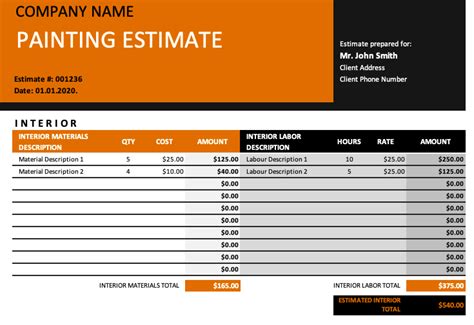Truck Paint Project: Estimating Paint Gallons Easily
Painting your truck is a significant undertaking, offering a chance to revitalize its appearance and protect its body. However, before you dive into the vibrant world of automotive paints, accurate planning is crucial. One of the most common pitfalls is miscalculating the amount of paint needed. Underestimating leads to frustrating mid-project paint runs, while overestimating results in wasted money and paint disposal headaches. This guide will equip you with the knowledge to estimate your paint needs efficiently and accurately.
How Much Paint Do I Need for My Truck?
This is the million-dollar question, and unfortunately, there's no single magic number. The amount of paint you need depends on several factors:
- Truck Size: A compact pickup will naturally require less paint than a large-sized semi-truck.
- Number of Coats: Most paint jobs require multiple coats for optimal coverage and color depth – typically two or three.
- Paint Type: Different paint types have varying coverage rates. For instance, acrylic lacquer might require more coats than a urethane paint.
- Surface Preparation: Thorough preparation, including sanding and priming, impacts paint adhesion and overall coverage. More prep often means less paint wasted.
Understanding Paint Coverage Rates
Paint manufacturers typically provide a "coverage rate" on the product label. This is usually expressed in square feet per gallon (sq ft/gal) or square meters per liter (sq m/l). This figure represents the area a single gallon (or liter) of paint can theoretically cover with one coat under ideal conditions. Keep in mind that these are ideal conditions – real-world application often requires more paint.
Calculating Your Truck's Paintable Surface Area
To accurately estimate your paint needs, you need to determine your truck's paintable surface area. This isn't a simple measurement; it's best approximated using the following method:
- Break it Down: Divide your truck's surface into easily measurable sections (e.g., hood, roof, doors, sides, tailgate).
- Measure Each Section: Use a tape measure to determine the length and width of each section. Remember to account for curves and irregularities as best as you can.
- Calculate Area: For rectangular sections, multiply length by width (length x width = area in square feet or meters). For more complex shapes, you might need to break them into smaller, more manageable rectangles and triangles.
- Sum the Areas: Add the areas of all sections to get the total paintable surface area of your truck.
Pro Tip: Consider using online calculators or automotive paint supply websites that offer surface area estimation tools. Many provide templates for various vehicle types, simplifying the process.
Accounting for Multiple Coats and Waste
Once you've calculated the total paintable area, remember to factor in the number of coats you'll apply. Multiply your total surface area by the number of coats. Also, add a 10-15% buffer to account for waste due to spills, runs, and uneven application.
What About Primer?
Don't forget about primer! Primer is crucial for paint adhesion and even coverage, and it will require its own calculation using the same method described above. Primer coverage rates might differ from topcoat paints, so refer to the manufacturer’s specifications.
Frequently Asked Questions (FAQs)
How many gallons of paint do I need for a standard-sized pickup truck?
There's no single answer; it depends greatly on the truck's size and the paint's coverage rate. A rough estimate for a standard pickup truck with two coats might range from 2-4 gallons. However, accurate calculation using the method above is strongly recommended.
Can I use a paint calculator to estimate my truck paint needs?
Yes! Many online paint calculators and automotive paint supplier websites offer tools to estimate paint needs based on vehicle type and dimensions. These tools can significantly simplify the process.
What type of paint is best for a truck paint job?
Urethane paints are popular for their durability and lasting finish. Acrylic lacquer is also a common choice. Consider factors like your budget and desired finish when choosing. Consult with a professional at an automotive paint supply store for expert guidance.
How important is surface preparation before painting my truck?
Proper surface preparation is paramount. A poorly prepped surface will lead to poor paint adhesion, chipping, and peeling. It's crucial to thoroughly clean, sand, and prime your truck before applying paint for a lasting finish.
By following these steps and taking into consideration the factors discussed, you can accurately estimate the amount of paint needed for your truck paint project, saving you both time and money. Remember, accurate measurement and planning are key to a successful paint job.

